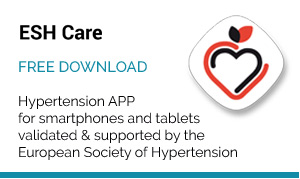Fetal programming and low birth weight has been clearly shown to be associated with a number of factors that lead to a higher risk for cardiovascular (CV) and metabolic disorders and diseases, including hypertension, type 2 diabetes mellitus (T2DM), hyperlipidemia, insulin resistance, metabolic syndrome, vascular dysfunction, and coronary heart disease (CHD). This lecture by Prof. P. Nilsson, Malmoe, Sweden, reviewed the current concept of fetal programming, epidemiological and clinical data elucidating its effects, including unpublished data from a large population in Sweden, and possible mechanisms.
Fetal programming is a specific stimulus that during a critical time period might cause permanent changes in the organism. Although it was initially thought poor maternal peri-natal nutrition was the major factor contributing to low birth weight, the concept of DOHaD points to the rapid post-natal catch-up growth as a major factor contributing to an increased risk for T2DM and CV diseases. Gluckman and Hanson in 2004 published this concept-Developmental Origin Hypothesis of adult Disease-showing that children with fetal-restricted nutrition and growth have a dangerous rapid catch-up in growth, along with genetic fetal and post-natal genetic factors leading to an increased risk of chronic disease.
Epidemiological findings
Risk for CHD and birth weight is reversely associated, and more detailed recent data shows a relation with so-called “catch-up growth” and disease development. One study from Finland showed a clear relation between growth pattern and development of CHD. Forsen and colleagues showed there is an association between weight at age 1 year and adult CHD, with about a 3.5-fold increased risk for a weight < 8 kg, 2.5-fold for <10 kg, and about 2-fold increased risk for a weight <12 kg.
Systematic data review
Baird and colleagues published data in 2005 showing there appears to be a relation between rapid growth in childhood, secondary to fetal growth, and adult obesity. Overfeeding in early infancy has been shown in the baboon to be associated with obesity.
Metabolic syndrome (MetSyn) and type 2 diabetes mellitus (T2DM) are associated with the rapid growth pattern in childhood. The risk for MetSyn is nearly 14-fold greater for a birth weight <2000 grams and nearly 8-fold greater for a birth weight of 2001-2500 grams. For T2DM, the cumulative incidence is about 9 for a birth weight <2000 grams and nearly 8 for a birth weight of 2001-3000 grams.
The presence of MetSyn in 58-year-old men is correlated to the ratio of their weight at the age of 18 years to their birth weight, as shown by data from Sweden.
The impact of “small gestational aging” or SGA on CV disease was explored in another study from data (in press). Analyses of millions of Swedish people comprising the National Birth Register and Multi-Generation Register assessed birth weight, SGA, and CV disease, as well as the impact of genetic, environmental, social and cultural factors between generations. Data from 0.4 million mothers and grandmothers revealed in 1.3 million daughters a 32% increased risk of CV disease if mother and grandmother had CV disease and 29% increased risk if the mother had CV disease. In 1.4 million sons, a 43% increased risk was found if mother and grandmother had CV disease and 37% increased risk if the mother had CV disease. A specific link between mothers and sons was found suggesting a tighter relation.
A common factor seems to influence the presence of CV disease in both the mother and her children, as shown by another analysis of these data from the Swedish registries. Data from 1.42 million mothers and their children revealed that the risk of the mother having CV disease increased in relation to the number of SGA children. The risk was 41% for 1 SGA offspring, 74% risk for 2 SGA offspring, and 86% for 3 or more. The common factor could be genetic/epigenetic or environmental, such as diet or smoking.
New perspectives: a multigenerational approach
Research in this arena is now taking a multigenerational approach, in both humans and animals. The intergenerational switching of pathways identified by Gluckman and Hanson is the most discussed pathway to date.
The role of cortisol metabolism, including the glucocorticoid receptor, is involved in immune and CV functions, and appears to have a relation to fetal programming, and is an area of ongoing research.
Data show that exposure of the fetus to high levels of corticoid steroids, secondary to leakage through the placental barrier, and thereby harming fetal metabolism has long-term health consequences, including in the CV arena increased sympathetic activity. A clear relation has been shown between birth weight, cortisol and resting pulse rate in adults, ranging from a rate of 76 bpm for a birth weight < 5.5 pounds to 71 bpm for a birth weight > 7.5 pounds.
Other data have shown an inverse relation between morning plasma cortisol level and birth weight. In 80-year-old men, the highest cortisol response to acetylcholine stimulation was found in relation to fetal growth retardation, supporting the effect of the loss of protection from the placental barrier.
Sympathetic nervous system activation (SNA) also has been shown to be affected by birth weight and SGA. Using the microneurographic technique, a correlation was shown between increased SNA and the presence of SGA in young adults. Prenatal development has been shown by a variety of studies to be related to increased stress responses, or a stress-susceptible state”, which could thereby increase the risk of T2DM and CHD.
Vascular function and structure in pre-term and low birth weight children
The “EVA Syndrome” is a term coined by Prof. Peter Nilsson to cohesively represent the current thinking about the model of arterial stiffening and pulse pressure variation that results in “early vascular aging”, a clear mismatch between the biological age and the chronological age.
Endothelial function plays a key role in general vascular function, including vessel caliber and tone, vascular growth and remodeling, tissue and organ growth, immune responses, blood fluidity, and the stickiness of platelets and white blood cells. Endothelial dysfunction causing impairment of any of these factors increases the risk of premature vascular stiffening and dysfunction and EVA.
Studies have shown impaired vasodilation was associated with low birth weight and that flow-mediated dilation is reduced in relation to growth patterns. Arterial narrowing has also been shown, which plays a role in hemodynamic regulation and development of arterial stiffening, through increased resistance downstream, increased vessel stress, and increased cardiac load.
Pre-term birth is associated with narrower arterial diameter on ultrasound. Interestingly, the number of capillaries and nephrons are decreased in children born pre-term, which can increase the risk of developing hypertension because of increased peripheral resistance. Low birth weight was shown in two different studies to be related to smaller coronary diameter in 9-year-old children and that augmentation index is higher.
Low birth weight fetal programming may have long-term hemodynamic consequences and the vascular outcomes in children can be endothelial dysfunction, narrower arteries, intima media thickening, capillary rarefaction, and arterial stiffness, all of which can result in adult CHD and CV diseases and metabolic syndrome.






